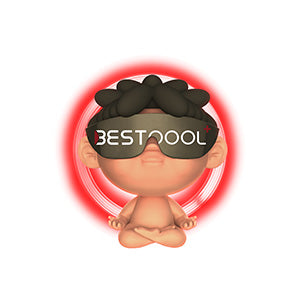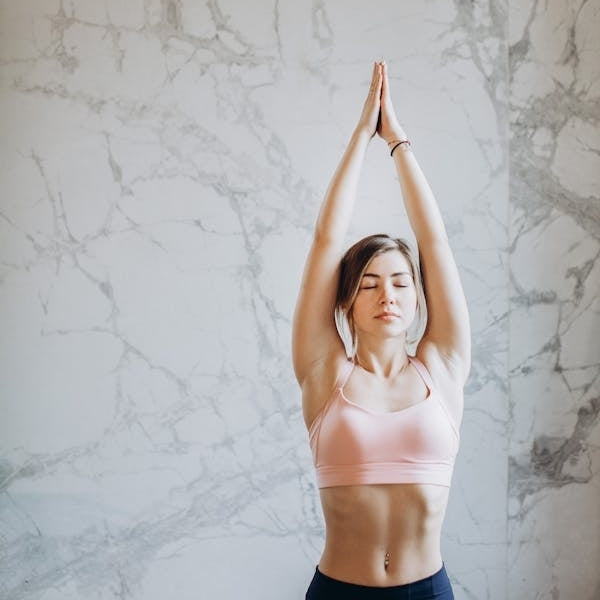Introduction to Red Light Therapy and Vision Health:
Loss of vision with long-term screen exposure time has become one of the primary concerns. Some individuals don't like glasses, while others find contact lenses cumbersome. Now, vision can be improved by red light therapy. A groundbreaking study by the University of London published in "The Journal of Gerontology" found that staring at a red light for three minutes a day can significantly improve the condition of vision loss.
The visible spectrum extends from 400 nm to 700 nm. Sunlight produces a continuous distribution of frequencies within the spectrum. Even though a single high spike band is absent, the 400–450 nm range might be the most bothersome regarding eye health because of low blue light damage. Conversely, red light within the 670–690 nm range can effectively repair and protect the cones of the eye, potentially extending the eye axis and promoting ocular health. This non-invasive red light can be integrated into everyday lighting sources, like lamps, to obtain its repairing effect on eye cells. Red light therapy appears to be the most promising way to fight against the adverse effects of blue light exposure and maintain general eye health.

Improving Retinal Function with Red Light:
Red light has a long history and has been clinically used to treat retinal diseases for decades. In recent years, through various studies, we have learned that red light therapy significantly delays the onset and progression of myopia and contributes to overall visual improvement. The central role of red light is like a "vitamin" to promote metabolism and induce cell self-repair. Red light enters the eye by targeting the retina, and its significant absorption occurs due to photoreceptor cells. That absorption enhances eye cell cellular energy production by supporting mitochondrial functions. The mitochondria are considered the powerhouse of a cell, and they further transform this light into ATP (adenosine triphosphate), the primary energy currency for all cells. This increase in ATP production underlies cellular metabolism, supports self-repair, and makes possible signal transmission within the retina. Red light reduces eye fatigue by replenishing energy in the affected retina cells.
Combatting Age-Related Eye Conditions:
The photoreceptor cells in the retina experience a decline in efficiency and health around 40, making vision less sharp. This aging process can cause several visual dysfunctions: a reduction in the acuity of vision, decreased contrast sensitivity, and an increased risk of developing age-related eye diseases such as macular degeneration (AMD). With aging, mitochondria-central energy-producing cell organelles and photoreceptor cells-steeply become less efficient over time to produce ATP. More evidently, the metabolic functions and repair mechanisms of photoreceptor cells revolve around ATP, a central molecule.
Red light therapy could positively affect how well we see and our ability to adapt to changes in light, perceive fine details, and distinguish between different shades and contrasts. Red light therapy is potentially effective for counteracting these age-related changes in the retina.
Reducing Inflammation and Eye Discomfort:
Studies have shown red light therapy causes a marked reduction in ocular inflammation, an essential predictor of vision health. Red light therapy penetrates deep into eye tissues to reach retinal cells, enhancing mitochondrial function. In turn, ATP production is increased to boost cell repair and reduce oxidative stress. A reduction of oxidative stress is achieved because of the lack of ATP production, which further decreases the production of pro-inflammatory cytokines and other markers of inflammation within the eye.
Anti-inflammatory red light therapy helps alleviate several symptoms associated with eye conditions. Lowering inflammation promotes tear production and relieves dry eyes. It also reduces muscle fatigue and soreness that occur commonly with eye strain.

Guidelines for Using Red Light Therapy at Home:
Red light therapy can be very promising and effective if properly and safely delivered, with daily benefits for eye health. Below are steps and best practices to ensure that you can enjoy your red light with confidence:
- Consult an Eye Care Professional
Initial Consultation: One is advised to schedule an initial consultation with an ophthalmologist or optometrist before the start of red-light therapy. During this time, your doctor can assess your eye health and determine if red light therapy is appropriate for you.
Continuous monitoring: Regular checkups will be needed to monitor your progress and therapy protocol adjustments.
- Choose the Right Device
Authorized Devices: Use devices purposely made for eye treatment to match the certification requirements and the parameters' capacity.
Quality and Safety: Ensure the device has been manufactured by a reputable manufacturer and tested for safety when used over the ocular area.
- Follow Manufacturer Instructions
Usage Guidelines: Before using the device, note the manufacturer's recommendations regarding time duration, frequency, and distance from your eyes.
Session Length: Usually 5 to 20 minutes. Begin with a shorter time and gradually increase to the maximum duration specified by the device.
- Make Part of Daily Routine
Consistency: Consistency in the practice of red light therapy daily, specifically in the morning or evening.
Environment: Use the therapy in a comfortable, relaxed setting to remain relatively still and keep your eyes in the optimal position around the device.
- Monitor Therapy Response
Monitoring Effects: you need to observe how your eyes respond to the therapy. Look out for eye irritation, discomfort, or extreme effects on your eyes. If you have any nuisance effects, stop the treatment and see your eye care professional.
- Protect Your Eyes
Eye Protection: Using eye protection when working with equipment that could expose the eyes to excess light might be necessary.
Proper Distance: Be at the recommended distance from the gadget so you don't get overexposed.
Safety Measures: If you have photosensitivity, don't take red-light therapy without first getting consent from a medical practitioner. Do not use in the presence of macular disease, severe dry eye, corneal disease, cataracts, vitreoretinal disease, eye infections, optic nerve damage, or abnormalities, except on the advice of an eye care practitioner. Light therapy is contraindicated if your pupils are dilated following medications such as low-concentration atropine eye drops.
Conclusion: A New Dawn for Eye Health Management
Red light therapy is a practical innovation in preserving and enhancing eye health, as it increases retinal function while reducing symptoms of dry eyes and eye strain. Its ease of integration into daily routines is friendly for the user, although one has to be cautious as detailed mechanisms and long-term effects are still under research. Red light therapy may open a new chapter for improved vision with quality-of-life benefits when adequately guided and monitored professionally.
References
[1]Shinhmar, H., Grewal, M., Sivaprasad, S., Hogg, C., Chong, V., Neveu, M., & Jeffery, G. (2020). Optically Improved Mitochondrial Function Redeems Aged Human Visual Decline. The journals of gerontology. Series A, Biological sciences and medical sciences, 75(9), e49–e52. https://doi.org/10.1093/gerona/glaa155
[2]Zhu, Q., Cao, X., Zhang, Y., Zhou, Y., Zhang, J., Zhang, X., Zhu, Y., & Xue, L. (2023). Repeated Low-Level Red-Light Therapy for Controlling Onset and Progression of Myopia-a Review. International journal of medical sciences, 20(10), 1363–1376. https://doi.org/10.7150/ijms.85746
[3] Grewal, M. K., Sivapathasuntharam, C., Chandra, S., Gurudas, S., Chong, V., Bird, A., Jeffery, G., & Sivaprasad, S. (2020). A Pilot Study Evaluating the Effects of 670 nm Photobiomodulation in Healthy Ageing and Age-Related Macular Degeneration. Journal of clinical medicine, 9(4), 1001. https://doi.org/10.3390/jcm9041001
[4]Brouwer, A., Nguyen, H. T., Snoek, F. J., van Raalte, D. H., Beekman, A. T. F., Moll, A. C., & Bremmer, M. A. (2017). Light therapy: is it safe for the eyes?. Acta psychiatrica Scandinavica, 136(6), 534–548. https://doi.org/10.1111/acps.12785














 Small
Small

 Moderate
Moderate

 Moderate
Moderate

 Moderate
Moderate

 Full
Full



